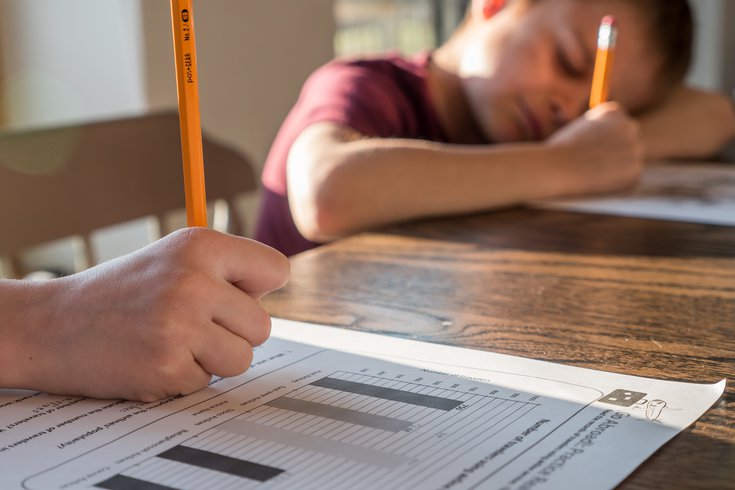
March 28, 2023
 Jessica Lewis/Unsplash
Jessica Lewis/Unsplash
Children and teens with sleep apnea often exhibit behavioral problems and have difficulties in school. Other symptoms include mouth breathing, night sweats, bedwetting and sleep terrors.
Sleep apnea not only can affect the growth and development of children, but it also can affect their health as adults. Early recognition is important to prevent long-term consequences.
Though loud snoring is among the most common signs of the disorder, some parents may not realize their children have sleep apnea because they do not share a bedroom with their kids. Plus, some infants and young children with sleep apnea do not snore; instead, they may have disturbed sleep, according to the Mayo Clinic.
The symptoms of sleep apnea among children may differ from those experienced by adults with the disorder. Though adults typically feel sleepy during the day, children often exhibit behavioral problems and have difficulties in school.
The breathing of people with sleep apnea becomes disrupted while they sleep. Their upper airways narrow or become blocked, causing them to briefly stop breathing several times each night.
These pauses in breathing may cause a drop in blood oxygen levels or an increase in carbon dioxide levels. When blood oxygen levels drop too low, the body's organs and tissues don't get enough oxygen, potentially leading to damage to the heart and brain. Elevated carbon dioxide levels may lead to frequent headaches and fatigue. When they become extremely high, they can cause difficulty breathing, respiratory failure, seizures and comas.
Pauses in breathing also lead to frequent awakenings at night and poor quality of sleep, which has been associated with its own list of health issues.
There are three types of sleep apnea: obstructive sleep apnea, central sleep apnea and mixed sleep apnea, which is a combination of the other two. Central sleep apnea occurs when there is a short-circuiting in the brain's respiratory center that causes pauses in breathing. Obstructive sleep apnea – when breathing is partially or completely blocked by tissue during sleep – is the most common type.
Though obesity is the most common cause of obstructive sleep apnea in adults, enlarged adenoids and tonsils often play a role among children. So can a neuromuscular disorder, like cerebral palsy, or a birth defect related to the shape of the face or head. Other risk factors include Down syndrome, sickle cell disease and a family history of obstructive sleep apnea.
Symptoms of sleep apnea in children include snoring, pauses in breathing, restless sleep, mouth breathing, night sweats, bedwetting, sleep terrors and coughing, choking or teeth grinding during sleep.
Children with obstructive sleep apnea also may be really sleepy during the day and have trouble with concentration and memory, which could affect their grades in school. They also often are hyperactive, have behavioral problems and poor weight gain. If left untreated, a child with obstructive sleep apnea may struggle to thrive, develop heart problems or possibly die.
Obstructive sleep apnea appears to cause changes in brain structure, according to a new study. Researchers at Children's Hospital at Montefiore in New York City studied the brain scans of almost 100 teenagers. Those with sleep apnea had thinner tissue in the cortex – the outermost layer of the brain – and signs of inflammation in the hippocampus, the brain area responsible for memory and learning. The changes were most pronounced among the teens with the most severe forms of sleep apnea.
More research is needed to understand what these differences in brain structure mean, Dr. Raanan Arens, chief of respiratory and sleep medicine at Children's Hospital at Montefiore, told U.S. News & World Report.
Sometimes, children outgrow sleep apnea. For those who don't, the condition can impact their health into adulthood.
Children who don't outgrow sleep apnea by adolescence are nearly three times as likely to develop high blood pressure as teens, according to research from the American Heart Association. People who develop sleep apnea as teenagers are 1.7 times more likely to have high blood pressure. Uncontrolled high pressure as a teenager may lead to more advanced heart disease later in life.
Treatment for obstructive sleep apnea in children generally involves medication to reduce inflammation and the size of the adenoids or tonsils blocking the airways. Continuous positive airway pressure, or CPAP therapy, in which a machine helps deliver air pressure to the child during sleep, also is used.
Sometimes, surgery is needed to remove the tissue blocking the airways. In certain cases, orthodontic treatment to straighten teeth also may improve sleep apnea. If a child is obese, losing weight is recommended.
Parents who are concerned that their children may have sleep apnea are advised to schedule a sleep study. Children will be observed overnight in a pediatric sleep lab. Sleep specialists will monitor their brain waves, breathing, heart rate and body movements.